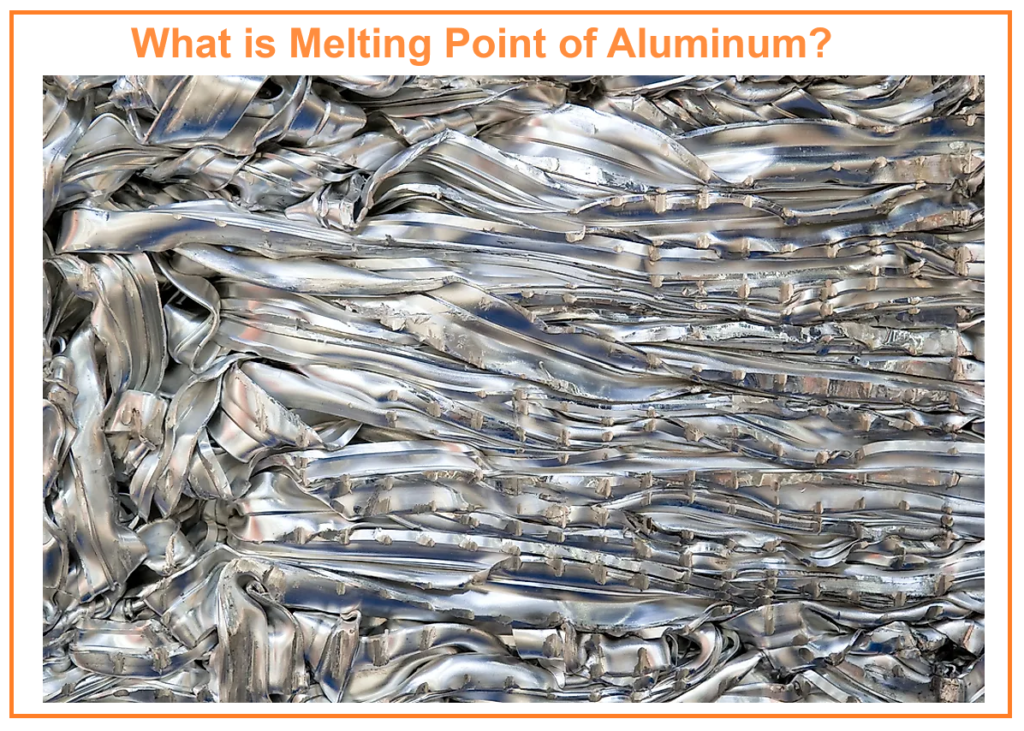Aluminum, an adaptable and lightweight metal, has numerous applications across industries and applications. An understanding of its properties – specifically its melting point – is critical in order to understand how aluminum behaves under various circumstances and maximize its utilization most efficiently. Aluminum’s melting point stands at 660.3 deg Celsius or 1220.54 Fahrenheit. We will delve further into this property in this article.
Introduction to Aluminum Aluminum is one of the three most abundant elements on Earth’s crust and is well known for its light density and ability to withstand corrosion. Commonly abbreviated ( Al ) it has an atomic number 13 and can be found almost everywhere from transportation, packaging and even construction industries owing to its advantageous properties such as being lightweight yet highly conductive.

What Is Melting Point?
Melting point is an essential property of all elements; it defines the temperature at which a solid turns into liquid at equilibrium between its two states – either solid or liquid. Being aware of a substance’s melting point such as aluminum is key in understanding its applications and potential uses more clearly.
Understanding Melting Point
Melting point is of utmost importance as it determines where and how a material can be used. Metals with high melting points such as jet engines require metals with higher melting points for increased temperature resistance while lower melting points such as aluminum may find use in everyday items or applications that do not necessitate such resistance.
Aluminum’s Melting Point
Aluminum has an approximate melting point of 660.3 degrees Celsius (1220.54 Fahrenheit), which is significantly lower than steel or iron. Aluminum’s lower melting point enables it to be melted using less energy compared with other metals; making it the go-to material in many manufacturing processes and contributing significantly towards recycling by only requiring 5 percent of energy needed to create its original state.
Aluminum’s low melting point makes it an attractive material in industries like automotive and aerospace for making lightweight parts, while its durability makes it suitable for construction of aircraft, vehicles and spacecraft where weight reduction is critical to performance and fuel efficiency.
Aluminum’s corrosion resistance and strength make it an attractive option in the construction industry, especially where materials may be exposed to harsh elements. Furthermore, its aesthetic appeal and flexibility contribute significantly to modern architectural designs using aluminum.
Aluminum in Everyday Life
Aluminum’s versatile properties and lower melting point find use in daily products such as cans, foils and kitchen utensils. Aluminum’s lower melting point also allows it to be easily formed into thin sheets or intricate designs for packaging food and beverages.
Aluminum recycling is more energy-efficient due to its lower melting point, leading to more sustainable practices that help protect the environment by decreasing waste production and energy use.
Aluminum is one of the world’s most recycled materials, and its low melting point plays an essential role in its recyclability. Recycling aluminum scrap involves collecting and processing aluminum scrap for melting into new products – which requires significantly less energy consumption and emissions compared with producing it from ore.
Aluminum Alloying
Aluminum alloying can improve its physical properties such as strength and heat resistance. By adding copper, zinc, or manganese into an alloy mixture, its melting point can be altered accordingly, meeting individual requirements for its characteristics. Aluminum’s flexibility in being altered makes it a versatile material ideal for applications ranging from heat sinks in electronic devices to structural components in aircrafts.
In Comparison In comparison with other metals, aluminum’s melting point is relatively low compared to others such as iron (1538circcirc ) Celsius and copper (1085 circ circ ) Celsius respectively. This difference affects their areas of application: iron is utilized where strength and high-temperature resistance are essential, while lightweight corrosion resistant properties of aluminum make it the go-to metal choice.
Environmental Considerations
Producing aluminum from bauxite ore is an energy-intensive process requiring the Bayer process for refining alumina from ore and Hall-Heroult process for extracting aluminum. Given these demands on primary production, recycling aluminum has significant energy-saving and environmental advantages compared to primary production. By taking advantage of its recyclability, industries can promote sustainability practices and contribute towards resource conservation.
Educational Implications
At an educational level, understanding the melting point of aluminum provides insight into material science and physical chemistry. Students gain knowledge of phase transitions as they discover when different states of matter become stable – knowledge which is fundamental for various scientific fields – making the study of its properties, such as its melting point, an invaluable educational experience.
Conclusion
Aluminum’s melting point of 660.3o Celsius or (1220.54o ) F is an important characteristic that determines its applications across numerous industries. Due to this relatively low melting point, aluminum can be easily formed into molds for various applications from aerospace to kitchenware products.
Aluminum’s low melting point not only defines its applications, but it is also instrumental in environmental conservation by encouraging efficient recycling processes. Furthermore, its ability to be alloyed with other metals allows it to be tailored specifically to individual requirements or applications.
Understanding the melting point and implications for aluminum provide a comprehensive view of this versatile metal’s role in our lives, industries and the environment. It emphasizes material properties as a determinant for application while driving advancements in science, technology and sustainable practices.